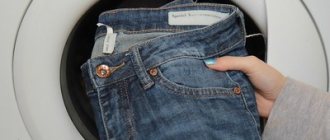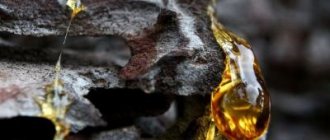During the operation of any car, no one is immune from the appearance of various kinds of stains on the body of their car. This could be bitumen, poplar buds, bird droppings, etc. But some stains at first glance seem difficult to remove, and most drivers prefer to entrust this matter to “professional” car washes. In fact, this is not so, and you can get rid of any stain yourself, saving quite a bit of your money. Therefore, further we will talk about those removal methods that every person can use, without buying any store-bought chemical mixtures, which in most cases do not help at all.
- How to remove poplar bud stains?
- How to remove bitumen from a car body?
- How to remove ingrained bird droppings from a car body?
- Why is bird droppings dangerous for a car's paintwork?
What can I use to clean it off the body?
Tree resin is very sticky. Upon contact with air, it hardens and firmly attaches to the surface on which it comes in contact.
The resin of linden, poplar, pine and other trees has these properties. Therefore, any trip to nature can end in trouble for the motorist in the form of frozen tar stains.
If you find them, you don’t have to immediately go to the car wash ; you can try to deal with the problem on your own: using improvised means or ready-made store-bought formulations.
Folk remedies
You can get rid of tar stains using folk remedies that can be found in every home. Effective compositions:
White Spirit .
This is a popular, inexpensive solvent that can easily remove tar stains. However, it must be used carefully so as not to damage the paint. The product is applied to a soft cloth, applied to the dirt and rubbed gently so as not to leave streaks.- Hand sanitizers .
Such products are almost always on hand, so they can be used immediately after detecting a stain. The antiseptic is applied to a cotton pad, which is applied to the resin, left for 10 minutes, after which the softened composition is removed with a clean cloth. - Alcohol or vodka . Even the most inexpensive drink works great on tar stains.
Do not apply the selected product directly to the car body. First, a rag is moistened with it, which is applied as a compress to the stain for several minutes. After this, the dirt is gently rubbed, without much pressure.
If the stain is fresh, you can get rid of it using ordinary soapy water . The only condition is that it must be hot.
It is advisable to choose a microfiber cloth. It needs to be rinsed all the time so that the resin does not turn into a sticky mess and spread over the body. It will be possible to completely deal with a fresh stain in several approaches.
How to remove tar from a car, video recipe:
Special formulations
There are many compounds on sale that are designed to remove tree sap from the body. Top 3 effective remedies:
SHIMA Detailer Green Cleaner
The composition is based on an aliphatic solvent . The manufacturer claims that the product is effective not only against resins, but also against poplar buds, bitumen and tar.
SHIMA body cleaner for bitumen stains and tar Detailer Green Cleaner is applied to the surface of the body using a foam sponge, left for 2-5 minutes, and washed off with soapy water.
The price of a 0.5 liter bottle is 250 rubles.
SONAX
This is a highly specialized product designed to combat stains from tree resin. It can be used on paintwork, glass, chrome and plastic.
The mild formula of SONAX wood resin body cleaner gently removes dirt without harming the car body.
The price of an aerosol with a volume of 0.4 l is 750 rubles.
Arexons Resin and Bug remover
Arexons body cleaner spray against traces of insects and resin Resin and Bug remover acts quickly, does not harm the paintwork , and is economically consumed. To remove dirt, spray it on the stained areas, leave for a few minutes and wipe with a sponge.
The price of a 0.5 liter spray is 390 rubles.
An interesting and inexpensive way
Here is another rather interesting method for those who do not know how to wash poplar buds from a car.
For this you need a construction hairdryer, although you can get by with a household one.
So, the stain should be warmed up, then it should be carefully wiped off with a cotton swab dipped in ammonia. Next, you need to quickly wipe the area. It is best to wash it with soapy water.
How to clean bitumen from the road?
Bitumen on a car is a common thing for car owners. It is enough to drive along a section of road that is being repaired or is hot, and dark stains from tar will cover the body. They can be removed either with improvised means or with specialized compounds.
Liquids at hand
Folk remedies for getting rid of road tar:
- Petrol. Every motorist always has it with him.
You can use it at any convenient time. Gasoline does an excellent job of removing both fresh and old stains, but in the latter case you will have to put in more effort. It is easy to use; just apply gasoline to a rag and wipe the dirty surface. You need to act carefully, without making much effort, since the paintwork may come off along with the bitumen. Diesel fuel and kerosene have a similar effect. - Nail polish remover . It is based on acetone, so it easily copes with tar stains. The only condition is the refusal of intense friction.
- Sunflower oil . It can be used to get rid of fresh stains before they have time to harden. Apply the oil to a rag and rub it until the body is completely clean. It will take a little effort and time, but the result will satisfy the car owner, since the oil not only removes road tar, but also does not harm the paintwork.
The video will show you how to clean your car from bitumen stains:
Cleaners
If you don’t want to use improvised means, or they turn out to be ineffective, you can purchase special substances in the store that were developed for this purpose. Popular road tar cleaners:
GraSS Antibitum
The product is effective against all types of resins, bitumen and stains from poplar buds. It acts quickly, within 1-10 minutes .
GraSS body cleaner for removing bitumen stains Antibitum is applied to the contaminated surface, left to soften the resin, rubbed and washed off with water with the addition of a degreaser.
The price of a 0.5 liter bottle is 210 rubles.
Autoland
The composition is designed specifically for the care of painted car parts . It is effective against resins, insect marks, poplar buds and bitumen stains.
Autoland body cleaner for bitumen stains and insect traces is applied to the stain for 1-3 minutes, after which it is removed with a foam sponge. If necessary, repeat the procedure.
The price for a 0.5 liter package is 180 rubles.
RunWay
Before use, shake the bottle and then distribute the composition evenly over the surface . After 30 seconds, you need to quickly remove dirt, without pressing. The main active ingredient in RunWay body cleaner for bitumen stains is aviation kerosene.
The price of a 0.5 liter bottle is 250 rubles.
Household chemicals
Chemistry in everyday life will allow you to clean any type of resin.
- stain removers;
- powders;
- cleaning liquids;
- acetone and other solvents.
Stain remover
It is better to take a liquid stain remover for colored laundry. You can use Vanish. Apply the product with a spoon to the contaminated area, leave for 2-3 minutes, and rinse off. The hardened resin should be lightly rubbed with a washcloth before removal.
Powder
Suitable powder for washing white laundry. The product is applied to the resin and rubbed into it until pellets begin to form.
This indicates softening and removal of resin. After completing the procedure, your hands should be thoroughly washed with soap and lubricated with a moisturizing, nourishing cream.
Detergent
Dishwashing liquid diluted with citric acid works real miracles. Acid is applied to the problem area, and a small amount of detergent is applied on top.
After 2 minutes, the resulting slurry is washed off with a washcloth.
Acetone
Acetone is a solvent and you need to be careful with it.
To wash off the resin, apply a little product to the skin and try to remove the resin. You can do this with a soft washcloth.
How to remove it from different surfaces of the car?
If resin gets on open parts of the car, for example, on the body or roof, on the trunk or on the glass, it is not difficult to get rid of it.
Algorithm of actions:
- the car must be rinsed with clean water to remove dust and road dirt;
- soak a soft cloth in hot water and go over the stains;
- those resin traces that are not washed off with soapy water are treated with improvised means or specialized compounds.
Resin on fender flaps, arches and sills spoils their appearance, so you can’t ignore it. To clean these parts, you will need to remove them. Once they are detached, they are soaked in a hot soapy solution for 10-15 minutes.
Those stains that could not be washed off with water are rubbed with detergent solutions. You can use both improvised means and specialized chemicals.
Reasons for the appearance of bitumen stains on a car
Bitumen stains appear on the car body, falling onto it from the asphalt surface. The main reasons for this phenomenon lie in the following:
- premature use of a newly repaired road section, when the new road surface has not yet fully formed;
- During hot periods, asphalt tends to melt under the influence of high temperatures. Resin, which is actively used in road repairs and filling potholes, is subject to the same process. Combined with the fact that in hot weather the temperature of the car body can reach 80 ° C, bitumen, when it comes into contact with a heated paint coating, is very easily introduced into its structure;
- The reason for the appearance of such pollution is also the fact that particles of tar fall onto the car body from the wheels of nearby passing cars. It should be taken into account that the higher the speed on the new road, the further such particles will fly off.
Advice! In order to wipe the bitumen off the car, you need to start this process as soon as possible after the contamination has been discovered. Fresh stains (when the tar has not yet been completely absorbed into the paintwork) are much easier to remove than hardened stains.
Most often, the following elements of the car body suffer from this type of contamination:
- bumper;
- wheel arches;
- bottom of doors;
- thresholds.
There are certain preventive measures that will minimize the risk of bitumen contamination on the car body:
- compliance with the speed limit for driving along the recently repaired section of the road (ideally, the speed should not exceed 50 km/h);
- maintaining a distance between cars when driving (this is especially true for trucks, when driving next to them, bitumen can even get on the windshield of the car);
- timely installation of special mudguards;
- applying a protective coating to the car body.
What should you not do?
To avoid damaging the car body, you should not make the following mistakes:
Do not use solvent 646, pure acetone or solvent to remove stains. These compounds are too aggressive, so together with the resin they will dissolve the paint that covers the car.- You cannot start cleaning if the machine is dirty. First you need to wash it. This will make the stains more visible.
- Do not use abrasive compounds such as baking soda or stovetop cleaning powder to remove resin.
- Do not use hard kitchen sponges, brushes or sandpaper for cleaning.
Features of epoxy resin
Thermoset plastic has special strength due to its complex structure. The material is in demand in almost all areas of industry.
The synthetic oligomer contains the following substances:
- alabaster, cement, chalk - compact the structure of the mass;
- fine-grained powder – adds airiness;
- cotton, glass fiber - adds viscosity to the substance;
- wood chips – reduces specific gravity;
- pyrogenic silicon dioxide – increases the density of the mass;
- graphite – gives black color.
By combining different resins and hardeners, it is possible to create building materials with increased rigidity and strength. In this case, the substances may have a rubber or hard structure.
Helpful information
Tips to help you cope with the task more effectively:
- Before using detergent on a visible area of the car, you need to test it in an inconspicuous place. If the paintwork does not change color or wash out, you can begin to remove the resin.
- If you don't have a cleaner or solvent on hand, you can wipe off tar stains with WD-40. Almost every motorist has a can of this product. The composition is especially effective in combating fresh stains.
- Most resin removers are based on petroleum fractions, so they are flammable and also have a specific odor. Therefore, you need to work with them carefully.
- If the stain is large, then remove it point by point. Apply the product using a brush. This is a rather tedious task, but this way you will be able to avoid subsequent painting of the car.
- After treatment, the car must be washed using car shampoo.
Recipes and tips for removing resin from various surfaces are presented in this section.
Folk way to remove marks from poplar buds
To safely remove marks on the hood and roof of a car, you will need a simple product that costs a penny and is always available for sale. This is ammonia (or ammonia).
Apply the product to the dried mark, leave it for a while, and then remove the problematic stain mechanically - with a regular paper napkin. You will see the result immediately.
If the stain is not removed immediately, add a drop of ammonia and leave it to start the chemical reaction. And then remove this “plaque” with a napkin.
It is necessary to prepare a hand sanitizer (preferably not a cheap one and from a well-known brand) to remove tar or other adhering substances.
- Take hand sanitizer and apply one drop directly to the tar stain or sticky wood bud.
- Using one finger, gently rub this drop of hand sanitizer over the entire surface of the sticky spot
- Dry the smeared stain with a paper towel or large napkin
- Wash off any remaining sticky substance on the car body using a damp cloth or paper towel.










